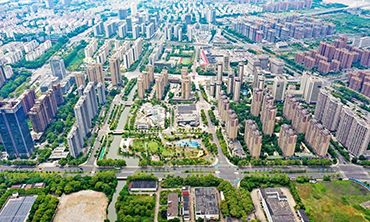

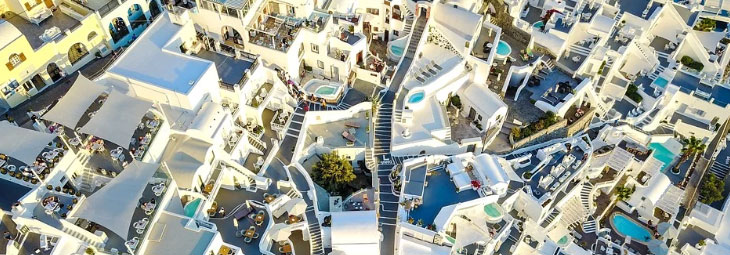
Urban renewal in China is an important path to promote high-quality urban development during the period of stock-based urban regeneration. By upgrading old communities, optimizing spatial quality, and improving supporting facilities, it seeks to enhance living environments and maximize efficient use of resources. This effort aims to support the optimization and upgrading of urban structures, create more livable, intelligent, and sustainable living spaces, and simultaneously boost urban economic vitality and social governance capabilities.
Recently, the Ministry of Housing and Urban-Rural Development released the second batch of "Typical Urban Renewal Case Studies." These include exemplary cases of complete community construction, such as those in Jiangsu Road, Changning District, Shanghai; Mingzhu, Ningbo, Zhejiang; Nanchuanyuan, Nantong, Jiangsu; Dongrong, Xiamen, Fujian; and Sunjialong, Jiujiang, Jiangxi. These case studies highlight the significant role of urban renewal in transforming urban development models and illustrate the direction of transformation for modern residential area construction in China during the period of stock-based urban regeneration. These cases provide innovative examples from the perspectives of concepts, methods, and technologies, offering valuable lessons for the high-quality renewal of urban residential areas.
Conceptual Transformation: From Housing Construction to Community Building Governance Logic. Innovating residential construction models requires a departure from the traditional concept of "residential areas" as mere physical spaces and expand the community as a fundamental unit of national governance. Complete community cases have activated multiple stakeholders, established community consultation mechanisms, and transformed the community from a "living container" into a "governance ecosystem." For example, the Jiangsu Road Complete Community in Changning District, Shanghai, leads with its "Original Intention Yu Garden" brand and implements the "Lane System" to strengthen grassroots governance. It also employs the "public-driven decision-making" work method, integrating community production, life, and ecology. The Nanchuanyuan Complete Community in Nantong, Jiangsu, encourages public participation throughout the entire community governance process, establishes a consultation platform, and hires community experts as "community planners" to guide the renovation process, cultivating bottom-up, endogenous community power.
Workflow Iteration: From Elite Planning to People-Centered Renewal. Traditional elite planning models, which are land development-oriented, cannot address the complexities of urban stock renewal. Complete community construction emphasizes problem-oriented and goal-oriented approaches, focusing on people’s needs. Community assessments are used as a prerequisite to identify community shortcomings, guiding the creation of tailored solutions based on residents' needs. For instance, the Mingzhu Complete Community in Ningbo, Zhejiang, conducts comprehensive community health assessments, surveys of unused spaces, and resident questionnaires. The results form a clear action plan for renovation, encouraging private enterprises to participate and allowing professional operators to intervene early in demand research, project planning, and design. This approach ensures that the renovation plan is closely aligned with residents' needs while also expanding profit potential.
Public Service Facilities Reconstruction: The Return of Value From Indicator-controlled to Experience-Oriented. Complete communities focus on creating "demand-responsive" service systems within a 5-10 minute living circle. They improve facilities for groups with special care needs, such as the elderly and children, and optimize existing housing resources to meet these needs. For example, in the Sunjialong Complete Community in Jiujiang, Jiangxi, unused land is revitalized according to the principle of separating ownership from usage rights. The community repurposes dormitory areas of the Jiangxi University of Finance and Economics to build an elderly service station and childcare center, with ownership remaining with the university but granting the street 40 years of usage rights to address elderly care and childcare challenges. Similarly, the Jiangsu Road Complete Community in Changning District, Shanghai, provides a "one-stop" comprehensive service center offering services for the elderly, parent-child interaction, and cultural and entertainment activities, transforming high foot traffic into positive energy for development.
Digital Technology Empowerment: From Service Management to Intelligent Property Efficiency Upgrade. Intelligent community services represent a significant development direction in modern community management. By incorporating technologies such as the Internet of Things, cloud computing, big data, blockchain, and artificial intelligence, smart property management service platforms are built to integrate online and offline services, enabling digital and intelligent community governance. For instance, the Mingzhu Complete Community in Ningbo, Zhejiang, developed a community smart service platform to manage key data related to residents, homes, items, and services. It uses this data to provide personalized services for six groups in need, such as the elderly, children, and disabled individuals, improving service effectiveness and precision. In Dongrong Complete Community in Xiamen, Fujian, smart infrastructure such as surveillance cameras, smart access controls, and smart street lamps are integrated into the community, enhancing governance, security, and service capabilities, upgrading residents' sense of happiness and safety right at their doorstep.
The high-quality renewal of urban communities not only enhances residents' well-being but also serves as an important direction for the transformation of urban residential areas in China. By continuously deepening conceptual innovation, methodological reforms, and technological iterations, this social practice, which embodies the ideals of co-creation, co-governance, and shared benefits, will undoubtedly contribute Chinese wisdom to urban renewal and governance.
Jiangsu Road Complete Community Construction Project, Changning District, Shanghai.
The Jiangsu Road community is located in the core area of the Yuyuan Road Historical and Cultural District, covering parts of the Qishan, Changxin, and Yusan residential committees. The community has approximately 11,000 residents, with a dense population and high building density. It features many old alleyways, new-style lane houses, and old garden villas, while the proportion of commercial housing and resale properties is relatively low. In recent years, residents have raised concerns about the insufficient number of standardized vegetable markets, difficulties with parking and charging, challenges in accessing upper floors, safety hazards in buildings, and a lack of green space.
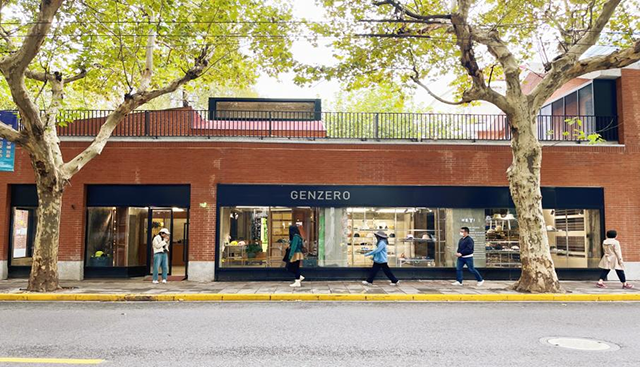
Street view of the Jiangsu Road community after the renewal.(China Construction News)
Starting in 2023, efforts have been made to reshape the community by adjusting its layout, developing new business forms, creating an ecological environment, and revitalizing cultural and creative commercial spaces. Over 100 unique small shops have been attracted, creating a blend of traditional "lively atmosphere" and "fashionable vibe" that coexist, share, and integrate. The community governance chain has been linked, guiding residents toward self-management and self-service. A co-creation governance mechanism has been established, where everyone participates in discussions, decision-making, and cooperation, achieving a harmonious integration of community production, life, and ecology.
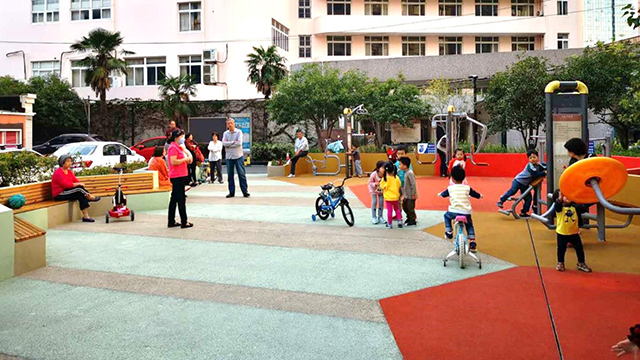
Residents engaging in activities at the renovated fitness plaza.(China Construction News)
Mingzhu Complete Community Construction Project, Ningbo City, Zhejiang Province
Established in 2013, the Mingzhu Community encompasses eight residential compounds, including Yinzhumingyuan (resettlement housing) and Yishuyuan (commercial housing), along with nearly 1,000 enterprises. It is home to 4,136 households and 9,415 residents. The community features diverse housing types and a complex population structure, with significant differences in residents' needs. A community assessment revealed several key issues, such as insufficient convenience and sports facilities, long distances to primary schools making school drop-offs inconvenient, and limited neighborly interaction in newer residential areas.
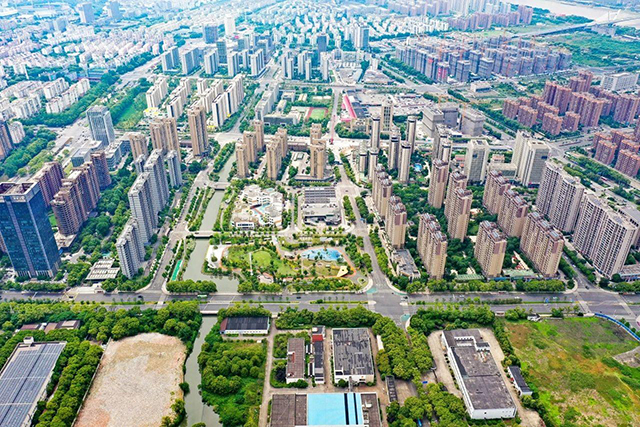
Real-life view of Mingzhu Community after the renovation. (China Construction News)
Since 2021, Mingzhu Community has aligned with the standards of a complete community, following the “Four Goods” requirements. By implementing targeted upgrades and comprehensive improvements, the project has enhanced the living environment, restructured functional spaces, and empowered public services with digital intelligence. As a result, the community has developed a series of inclusive and sustainable achievements-tangible for residents, viable in operation, and diverse in governance-creating a safe, reassuring, and happy haven for its people.
Nanchuanyuan Area Complete Community Construction Project, Nantong City, Jiangsu Province
The Nanchuanyuan Area (including Nanchuanyuan and Guoyuan communities) consists of 9 residential complexes, with 146 buildings, 5,405 households, and a permanent population of approximately 14,000. Most of the residential buildings were completed around the year 2000 and face issues such as aging infrastructure, parking shortages, unauthorized wiring, and poor pipeline systems.
Since 2023, the area has adopted the planning concept of a “community shared by all,” focusing on four key aspects: service demand, quality of life, shared interaction, and mutual cooperation. Through strategies such as enhancing ecological space quality, improving public service facilities, emphasizing cultural guidance, and innovating community governance, the project has introduced private capital to build an age-friendly “Good Life in Tongzhou” with comfortable living spaces, convenient and friendly services, and efficient, sustainable management-thus creating a truly inclusive complete community.
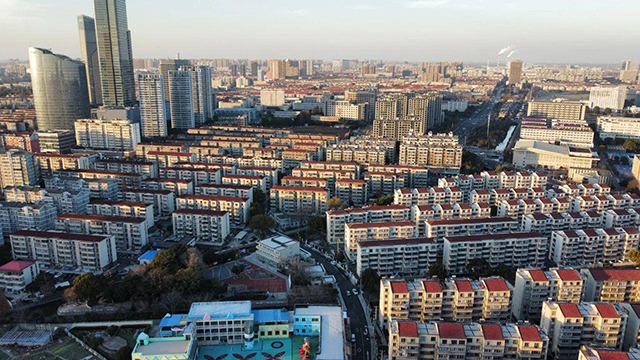
Post-Renovation View of the Nanchuanyuan Area(China Construction News)
Dongrong Complete Community Construction Project, Xiamen City, Fujian Province
Dongrong Complete Community is located in the southwest of Huli Subdistrict, Huli District. Most of the residential compounds were built in the 1980s and 1990s. Nearly 90% of them lack property management, and the residents mainly include resettled households, former port workers, and returning educated youths. The community features “three highs and two lows”-a high proportion of old neighborhoods, elderly residents, and disadvantaged groups, and low levels of public infrastructure and commercial activity.
Since 2022, the community has aimed to build a safe, healthy, well-equipped, and well-managed living environment. The project covers the Dongrong, Dongdu, and Jinding communities, adopting an "EPC+O" model that brings in private capital for renovation, property services, and space operations. The “EPC” part includes constructing 12 complete community nodes and renovating 25 old residential complexes, affecting 4,789 households and 15,000 residents, with a total construction area of about 313,200 square meters. The “O” component introduces property management into 28 previously unmanaged communities and manages approximately 2,400 square meters of public housing. These efforts have successfully upgraded outdated infrastructure, improved commercial facilities, enhanced landscaping, and ensured proper property services.
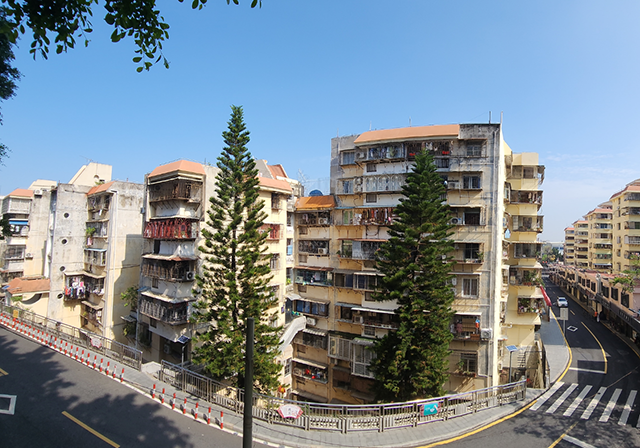
Post-Renovation View of the Donrong Residential Area(China Construction News)
Sunjialong Complete Community Construction Project, Jiujiang City, Jiangxi Province
Located in the central urban area of Jiujiang, Sunjialong Complete Community is situated in the Xunyang District and comprises 11 residential complexes, including the dormitories of the Telecommunications Equipment Factory, Rectifier Factory, and the Tax Office. There are 49 residential buildings in total, home to 2,738 households. Most buildings date back to the 1970s and 1980s and suffer from serious disrepair, narrow and uneven roads, and a lack of green space, public activity areas, and convenience facilities. Although the surrounding area has abundant educational and medical resources, they have not been effectively integrated and utilized.
Since 2022, following the “6 areas and 20 standards” requirements for complete communities, the project has adopted a multifaceted approach of “demolition of illegal structures, co-construction, and filling gaps.” Innovative models in construction, financing, and operation have mobilized extensive social participation in community co-governance. After the renovation, the community was completely revitalized, with new facilities such as covered walkways, shared sports fields, and elderly service centers. The cultural identity of “Bookish Sunjialong, the most beautiful way to school” has become deeply rooted in residents’ hearts.
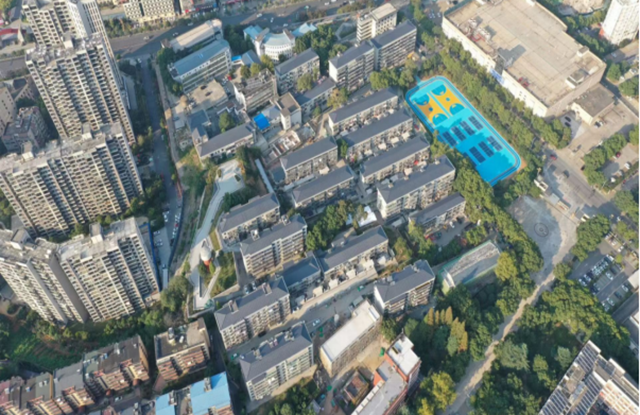
Post-Renovation View of the Sunjialong Residential Area(China Construction News)
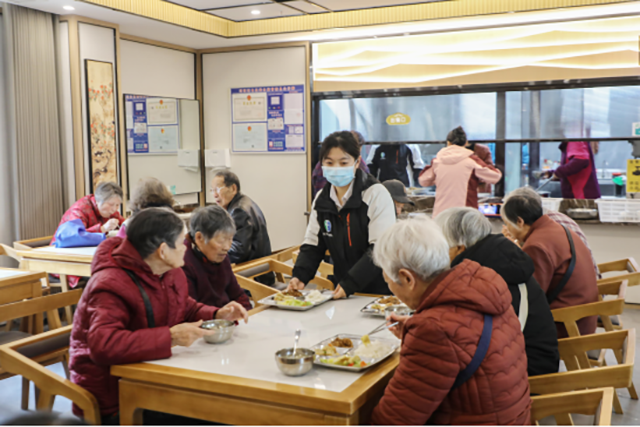
Cafeteria of Joy (China Construction News)
Source :http://www.chinajsb.cn/html/202504/17/48136.html
Translated By Jingyuan Zhang